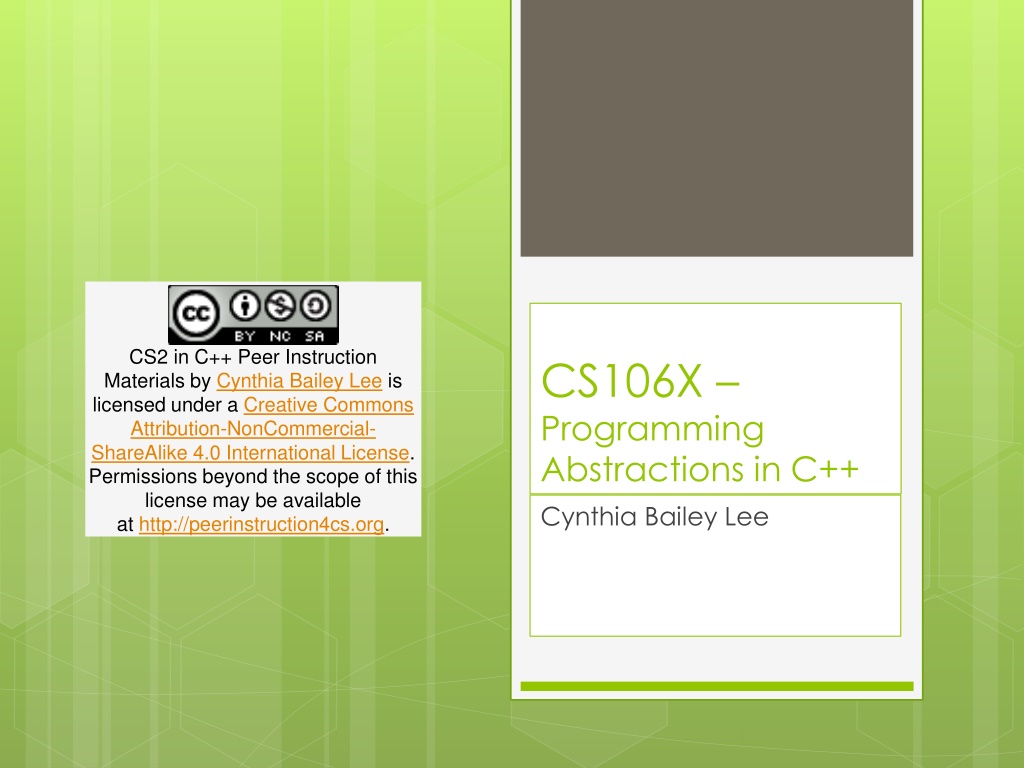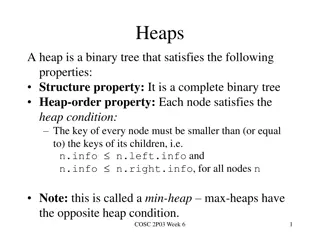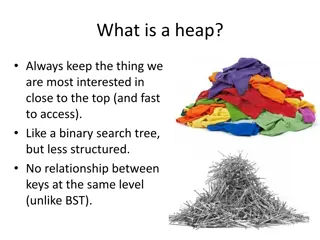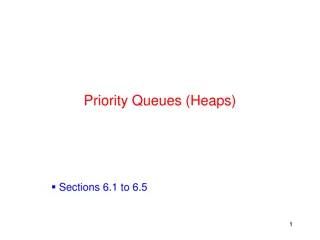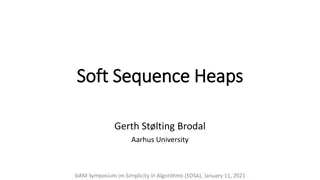Understanding Binary Heaps: Concepts and Implementations
Delve into the world of binary heaps with a focus on insertion, deletion, and analysis. Explore the implementation of binary heaps through insightful visual aids and exercises to enhance your understanding of this fundamental data structure.
Download Presentation

Please find below an Image/Link to download the presentation.
The content on the website is provided AS IS for your information and personal use only. It may not be sold, licensed, or shared on other websites without obtaining consent from the author. Download presentation by click this link. If you encounter any issues during the download, it is possible that the publisher has removed the file from their server.
E N D
Presentation Transcript
Creative Commons License CS2 in C++ Peer Instruction Materials by Cynthia Bailey Lee is licensed under a Creative Commons Attribution-NonCommercial- ShareAlike 4.0 International License. Permissions beyond the scope of this license may be available at http://peerinstruction4cs.org. CS106X Programming Abstractions in C++ Cynthia Bailey Lee
2 Today s Topics: Heaps! 1. Binary heaps Insert, delete Reasoning about outcomes in Binary heaps, and Big O analysis 2. Heapsort algorithm 3. (Schedule note: we ll save stack and queue implementation for another day )
Binary heap insert and delete
Heap outcomes by insert order Create a MIN heap by inserting the elements, one by one, in the order given below for the second letter of your first name: A-F: {3, 9, 18, 22, 34} G-L: {3, 22, 18, 9, 34} M-R: {9, 22, 18, 3, 34} S-Z: {18, 22, 3, 9, 34}
TRUE OR FALSE There is only one configuration of a valid min-heap containing the elements {34, 22, 3, 9, 18} A. TRUE B. FALSE
Heap outcomes by insert order Create a MIN heap by inserting the elements, one by one, in the order given below for the first letter of your last name: A-F: {18, 9, 34, 3, 22} G-L: {3, 18, 22, 9, 34} M-R: {22, 9, 34, 3, 18} S-Z: {34, 3, 9, 18, 22}
How many distinct min-heaps are possible for the elements {3, 9, 18, 22, 34}? A. 1-2 B. 3-4 C. 5-8 D. 5! (5 factorial) E. Other/none/more
Time cost What is the worst-case time cost for each heap operation: Add, Remove, Peek? A. O(n), O(1), O(1) B. O(logn), O(logn), O(1) C. O(logn), O(1), O(logn) D. O(n), O(logn), O(logn) E. Other/none/more
Heapsort is super easy 1. Insert unsorted elements one at a time into a heap until all are added 2. Remove them from the heap one at a time (we will always be removing the next biggest item, for max-heap; or next smallest item, for min-heap) THAT S IT!
Implementing heapsort Devil s in the details
Build max-heap by inserting elements one at a time:
Build max-heap by inserting elements one at a time: What is the next configuration in this sequence? A.12, 8, 2, 10 B. 12, 10, 2, 8 C.12, 10, 8, 2 D.Other/none/more than one
Build max-heap by inserting elements one at a time:
Sort array by removing elements one at a time:
Build heap by inserting elements one at a time IN PLACE:
Sort array by removing elements one at a time IN PLACE:
Complexity How many times do we do insert() when building the heap? How much does each cost? How many times do we delete-max() when doing the final sort? How much does each cost?
